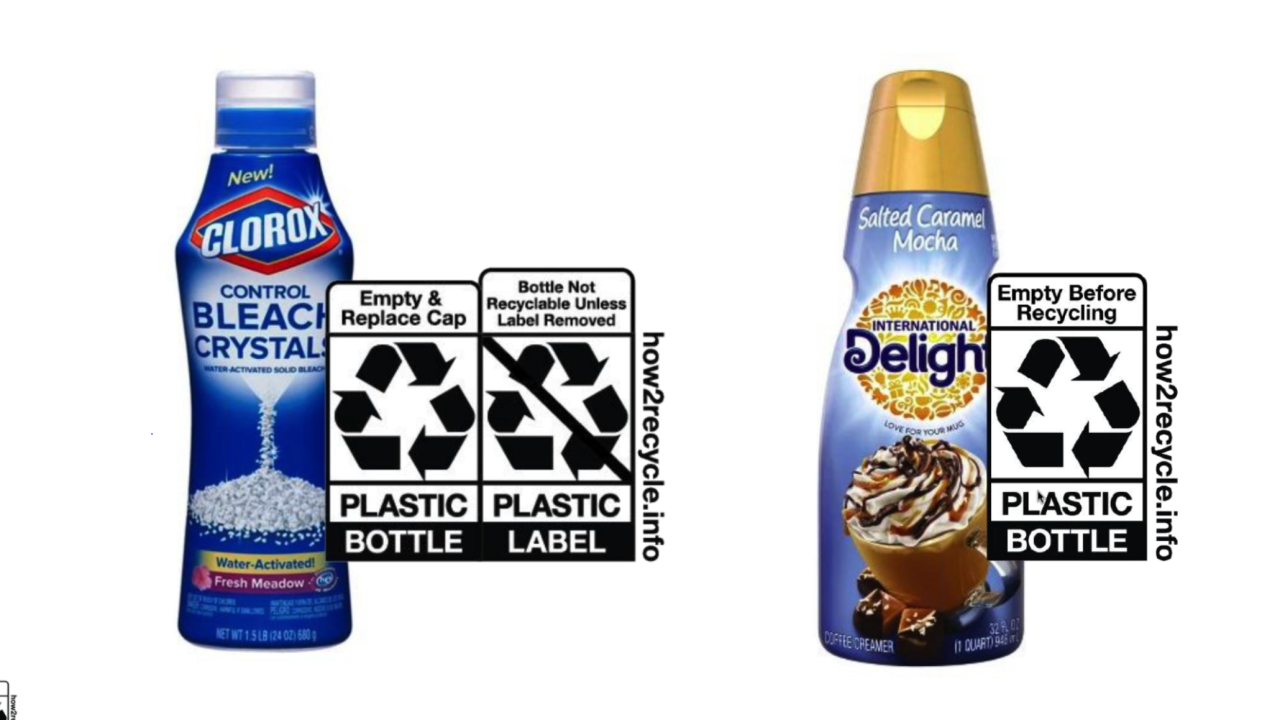What How2Recycle means to our industry

In 1998, Europe opened discussions about using Life-Cycle Assessment (LCA) as an approach to evaluating packaging and its impact on the environment. LCA is the comprehensive method for assessing a range of environmental impacts across the full life-cycle of a product system, from raw material extraction to manufacturing, use, and final disposition, or from cradle to grave.
Sustainability is still not a priority for many customers; performance, cost, service and innovation are the foremost demands in running a successful packaging business. Still, global and regional retailers and brand owners continue to respect the importance of a life-cycle approach towards improving packaging recovery rates in our value chain systems, and many leaders are taking collaborative action to improve.
The Sustainable Packaging Coalition (SPC) is the leading organization in providing the services and support required to improve. The membership-based, cross-industry group of supply chain stakeholders works together to develop market engagement in reducing the environmental impact of packaging. Many label converters, package printers, material suppliers and 90+ brand owners and retailers are SPC members, as well as educational institutions including Michigan State University’s School of Packaging, Rochester Institute of Technology, and Western Michigan State University.
The SPC’s How2Recycle project is an on-package recycling labeling system. The ultimate objective of the system is to communicate clearly to consumers about the recyclability of an entire package – bottle, label and spraying mechanism for example. Today, you can find tens of thousands of products with packaging verified to use the How2Recycle labels.
A label’s impact on the recycling stream
Acute demand for a cradle to grave assessment of labels on primary containers initiated in Canada as early as 2010, when the government enacted a stewardship tax forcing its large grocery retailers to pay for selling non-recyclable packaging on its shelves. Focus rapidly shifted to the adhesive construction of pressure-sensitive labels used on PET clamshell containers. There was communication by plastics recyclers across North America that adhesive typically sticks to the plastic flakes in a wash-out bath, leaving paper fibers when the facestock was not film, thereby contaminating recovered PET flake and reducing its resale value.
This drove the Association of Plastic Recyclers (APR), the representative group for plastics recyclers in North America, to quickly publish a test method for pressure-sensitive RCAs (Recycle Compatible Adhesives) that will not contaminate the plastic when recycled. The method is similar to APR’s methods for PET bottles. The group has also published the APR Design Guide for Plastics Recyclability, which is widely used as the resource for defining recyclability of plastics.
An item is ‘recyclable per APR definition’ when the following three conditions are met:
- At least 60 percent of consumers or communities have access to a collection system that accepts the item;
- The item is most likely sorted correctly into a market-ready bale of a particular plastic meeting industry standard specifications, through commonly used material recovery systems, including single-stream and dual stream MRFs, PRF’s, systems that handle deposit system containers, grocery store rigid plastic and film collection systems; and
- The item can be further processed through a typical recycling process cost effectively into a postconsumer plastic feedstock suitable for use in identifiable new products.
How2Recycle: Empowering brands to design for recyclability
How2Recycle is empowering its members’ brands with environmental impact insights to support efforts to track, measure, and improve the recyclability of their packaging – including the impact of various label formats on plastic packaging.
In using LCA and industry data to fuel a holistic approach to evaluating sustainable packaging with the on-pack communication scheme, the label industry has experienced the anticipated demand for an LCA of a label’s construction, no matter which format of product decoration – PS, shrink, glue-applied, etc – or printing process used. The disposal and recovery phase of a decorative label’s life-cycle and its compatibility in existing recycling processes for various primary packaging materials (plastics, aluminum, glass and paperboard) is gaining attention.
How2Recycle was developed on the framework of ISO 14021 and the Federal Trade Commission (FTC) Guides for the Use of Environmental Marketing Claims, a.k.a. the Green Guides. The FTC Green Guides outline general principles that apply to all environmental marketing claims surrounding products, offering terms and examples to guide consumers in making an educated decision on the products they purchase.
Kelly Cramer, senior manager at Sustainable Packaging Coalition and leader of the organization’s How2Recycle scheme, recently guided TLMI members through an educational webinar. She explained, ‘The labeling system directs the right behavior at a consumer level, and instructs our members on choices that can be made in packaging design and material selection to improve material recovery volume and value.’
APR Design Guide and direction around labels
APR has analyzed which parts of packaging are a struggle for recyclers. Cramer explained, ‘The SPC is aligned with the APR Design Guide when it comes to plastic recyclability, and where labels can help or hinder the recovery impact of the overall packaging.’
The APR Design Guide for Selecting Labels on PET Packaging suggests the following considerations:
- Any impact of the label on automated NIR sortation that identifies PET bottles at a MRF;
- Can the label be ‘liberated’ from the bottle and ‘separated’ cleanly from the PET?;
- If not separated, is the label compatible with PET?;
- Does the label impact wash water used for recycling?;
- How much waste and bale yield loss does the label create?;
- Does the label contaminate the closure side stream?;
- Can a metallized label be lost at a metal detector?; and
- Will high surface area coverage labels be missorted as colored bottles?
The APR Design Guide coaches that label selection be considered carefully to ensure a solution that meets both performance and cost requirements while meeting recycler processing needs. APR applauds label systems, adhesives and inks designed to perform in specific portions of the recycling process, and encourages using the lowest quantity of appropriate adhesive to meet performance. The Guide directs the industry to:
- Design labels so NIR sorting machinery can identify the bottle polymer with the label attached; and
- Design labels using adhesive chemistries or other material solutions that release the label substrate from the bottle at the appropriate recycling phase.
Comparing How2Recycle labels
Cramer walked listeners through the LCA phases of a primary container and the decorative and informational labels applied to it. Each container submitted through the SPC to receive specific How2Recycle labels for on-pack use goes through a custom recycling analysis.
She said: ‘We look at what the FTC says about the various packaging pieces to avoid consumer deception, then we look at the availability for recycling across the US. How does the material sort at a facility in a particular region or nationally? Then we review material reprocessing and uncover if there’s anything in the packaging design or construction that might cause a problem that requires attention.’
One comparison shared in the TLMI webinar evaluated two distinct How2Recycle labels provided to two different brands (Clorox vs International Delight) using full-body sleeve labels. These cover a large part of the bottle surface with a polymer that is not the same as the bottle body. The polymer of the label can cause a false reading on an automatic sorter and direct a PET bottle to another material stream where it is lost to the process. Also, some sleeve label materials cannot be removed in the recycling process and contaminate the RPET produced.
Sleeve labels that have been found compliant with the APR test protocols should be selected. In the example pictured, the International Delight shrink label incorporates APR preferred design selections to allow the entire container to be recycled properly.
Recycling progress
Cramer stated: ‘The on-pack label is triggering better recycling behavior and increasing the quantity and quality of recycled materials because of the labels.’
Additionally, the How2Recycle label scheme is demonstrating its use as a tool for industry leaders to tailor more specific and better sustainability goals with a more acute focus on end use recovery impact and performance. Through the evaluation of a specific package’s LCA and customized How2Recycle label, brands receive valuable feedback on where improvements can be made at an early stage in package development.
She continued: ‘The How2Recycle label is turning into a key influence for CPGs and retailers updating their recyclability goals. We are seeing more and more membership companies incorporating recyclability into performance reviews which is unlocking motivation in stakeholders to advance and drive change.’
There’s no doubt that the How2Recycle project’s influence across the packaging supply chain will continue to advance as the SPC leads the platform for sharing information and communicating clearly about the sustainability of packaging with the support of life-cycle analysis.
This opinion article was first published in Labels & Labeling issue 4, 2018
Stay up to date
Subscribe to the free Label News newsletter and receive the latest content every week. We'll never share your email address.


